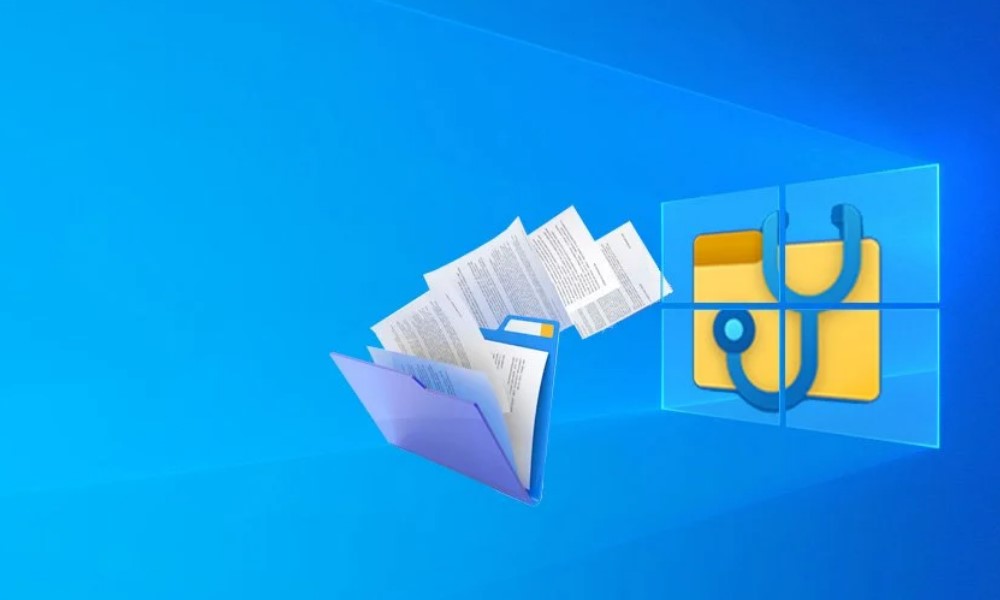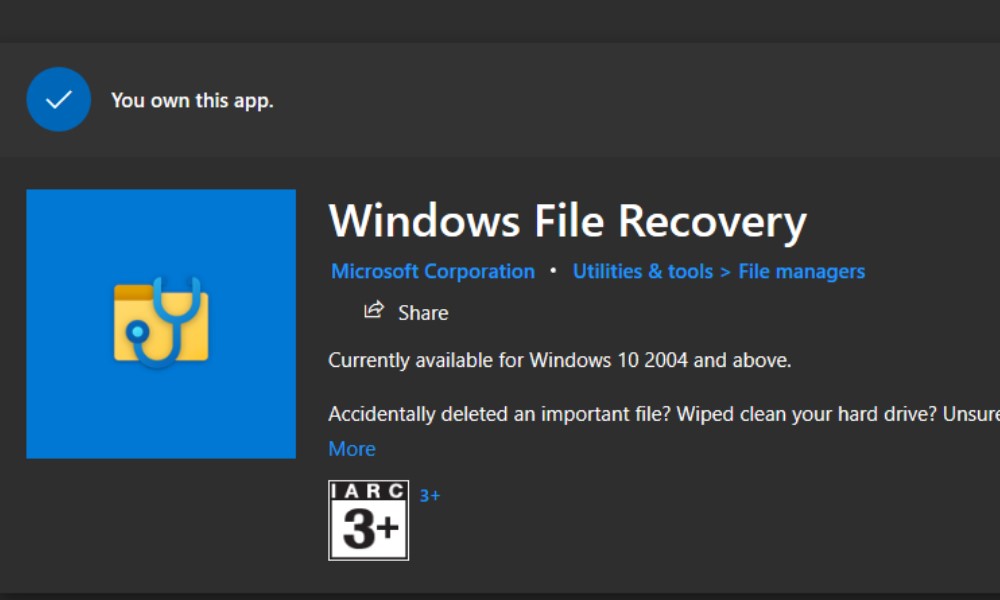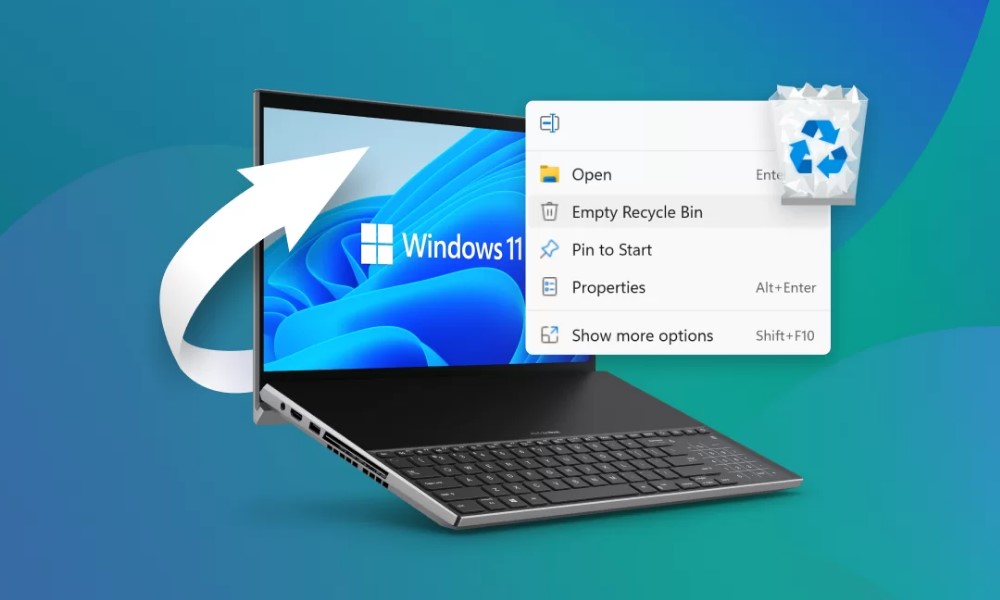Windows File Recovery: Best Guide to Recover Your Lost Data
Windows File Recovery refers to the process of retrieving lost, deleted, or corrupted files from a Windows-based computer or storage device. This can happen due to accidental deletion, system crashes, file corruption, or even hardware failure. Since data on a computer isn’t always truly erased when it’s deleted, file recovery methods can often restore files that appear to be lost.
Windows file recovery is crucial for anyone who relies on their computer for storing essential documents, photos, videos, or any other form of data. Data loss can be catastrophic, especially when files are irreplaceable or contain years of work. Knowing how to properly recover these files is vital for every Windows user.
Why is Windows File Recovery Important?

Whether for personal, educational, or professional use, computers store critical data that could be invaluable to users. The significance of data recovery lies in the ability to recover files that may have been lost due to one of several common reasons:
- Accidental Deletion: Files can be accidentally deleted by pressing the wrong button, or through the unintentional action of emptying the recycle bin without realizing some important files are inside.
- System Failures or Crashes: Operating system failures, software crashes, or sudden shutdowns can lead to lost or inaccessible files, especially when files are being written or modified at the time of the crash.
- File Corruption: Files can become corrupted when your computer encounters a power surge or when they are improperly closed or written over. This makes the file inaccessible or unusable.
- Formatted or Damaged Drives: Formatting a drive (whether by mistake or necessity) or damage to the storage device (like a hard drive failure or disk malfunction) can cause files to become unreadable or lost.
- Virus or Malware Infection: Although this guide avoids delving into this topic, it’s important to note that some viruses and system issues can also cause files to be hidden, deleted, or rendered inaccessible.
Given these risks, Windows file recovery becomes essential. Without the ability to recover lost data, users could face irreparable damage to their important files or systems, whether personal photos, business documents, or crucial system files.
How Does Windows File Recovery Work?

Windows file recovery involves the use of specialized software tools designed to scan storage devices for deleted or lost files and recover them. The process generally consists of the following steps:
- Scanning the Storage Device: The recovery process begins with a scan of the storage device, such as a hard drive, SSD, USB drive, or external storage device. Recovery software searches for traces of deleted files by looking for file fragments, metadata, or file signatures. This scan helps identify which files can potentially be restored.
- Quick Scan: This type of scan is faster and looks for basic information, such as recently deleted files.
- Deep Scan: A deep scan is more thorough, searching for files across the entire storage device and identifying data that is still intact but harder to detect.
- Previewing Recovered Files: Once the software has completed its scan, it will show a list of recoverable files. Many tools allow users to preview these files before recovery to ensure that they are the correct files.
- Recovering Files: After selecting the files, users can initiate the recovery process. Files are usually saved to a different location to prevent overwriting other data. It’s essential not to recover files to the same disk or partition from which they were deleted, as this may overwrite the very data that needs to be recovered.
- Saving Recovered Files: Once the files have been recovered, users can move them to a safe storage location. Depending on the size and number of files, recovery can take anywhere from a few minutes to several hours.
By understanding how these recovery tools work, users can make informed decisions about which software to use and how to handle their data after experiencing a loss.
Step-by-Step to Windows File Recovery

Losing important files on a Windows computer can be stressful, but fortunately, it’s often possible to recover them with the right tools and approach. Below is a step-by-step guide to help you with the Windows file recovery process.
Step 1: Stop Using the Affected Device
The first thing to do after realizing that files are lost or deleted is to stop using the device immediately. This is crucial because when files are deleted, the data isn’t actually erased but marked as space available for new files. Continuing to use the device can overwrite the space, making recovery difficult or impossible.
- If you’ve accidentally deleted files from your desktop or an external device, avoid saving new files or installing software on the affected drive.
Step 2: Choose the Right File Recovery Software
To recover your lost files, you need a reliable file recovery tool. Some of the most popular and effective options include:
- Recoverit by Wondershare: Known for its user-friendly interface and deep scan capabilities.
- EaseUS Data Recovery Wizard: A popular tool with robust recovery features for all types of files.
- Stellar Data Recovery: Ideal for more advanced recovery needs, including recovering data from formatted or corrupted drives.
Ensure you download the recovery software from the official website to avoid any risks associated with malicious software.
Step 3: Install and Launch the Recovery Software
Once you’ve chosen a file recovery tool, the next step is to install it on your computer. Important: Install the software on a different drive or partition than the one you are trying to recover files from. This prevents overwriting the lost files during installation.
- Follow the installation prompts provided by the software.
- Launch the program after installation is complete.
Step 4: Select the Drive for Recovery
When the software opens, it will typically display all available drives and storage devices connected to your computer. To begin recovery, you’ll need to choose the drive where your lost or deleted files were stored.
- For instance, if you lost files from your C: drive, select it from the list of available drives.
- If you are recovering files from an external USB drive or SD card, ensure it’s connected before starting.
Step 5: Scan for Lost Files
Next, choose between a Quick Scan or Deep Scan.
- Quick Scan: This option is faster and looks for recently deleted files. It works well if you’ve only recently deleted the files.
- Deep Scan: This thorough scan takes longer but can recover files that were deleted a while ago or have been partially overwritten.
Click on the scan option to begin the process. The software will search for recoverable files, and the time it takes will depend on the size of the drive and the scanning method.
Step 6: Preview and Select Files to Recover
Once the scan is complete, the software will show you a list of files it has found. Many tools allow you to preview these files to ensure they are the ones you want to recover. You can sort the files by name, type, or date for easier identification.
- Select the files you want to recover by checking the corresponding boxes.
- Avoid recovering the files to the same drive or partition from which they were deleted to prevent overwriting.
Step 7: Recover and Save the Files
After selecting the files, click the “Recover” button. The software will prompt you to choose a safe location to save the recovered files. Choose a different drive or external storage device to avoid overwriting data.
- For example, save the recovered files to an external USB drive, or another partition if possible.
Step 8: Verify the Recovered Files
Once the recovery process is complete, go to the location where you saved the recovered files and verify that everything is intact. Ensure that the files are fully accessible and open correctly.
Best Products for Windows File Recovery

The market offers a wide range of tools for Windows file recovery, and choosing the right one depends on the specific recovery needs. Below, we will explore three of the most reliable and effective options, detailing their features, pricing, and the types of recovery they are best suited for.
1. Recoverit Data Recovery by Wondershare
Recoverit Data Recovery is one of the most comprehensive file recovery tools available, offering a robust solution for recovering lost files from a variety of storage devices, including internal and external hard drives, USB drives, and memory cards.
Features:
- Wide File Type Support: Recoverit supports the recovery of over 1,000 file types, including documents, photos, videos, and audio files.
- Deep Scan: This tool offers a powerful deep scan feature, ensuring that even deeply corrupted or hard-to-retrieve files can be recovered.
- Preview Files: Before committing to recovery, users can preview files to ensure they’re the correct ones.
- File Repair: Recoverit can also help repair damaged videos, which is an added bonus for those recovering video files from corrupted sources.
- Data Recovery from External Devices: Supports recovery from various external storage media such as SD cards, USB drives, and even RAID systems.
Pros:
- Supports all types of files, including media and documents.
- Offers a user-friendly interface with step-by-step instructions.
- Capable of performing deep scans for recovering hard-to-access files.
Cons:
- Free version has a limitation of 100 MB for file recovery, so the full version must be purchased for large file recovery.
- Premium version can be a bit expensive for casual users.
Price: Recoverit offers a subscription-based model, with the premium version starting at $39.95 per year, or a one-time fee of $59.95 for a lifetime license.
2. EaseUS Data Recovery Wizard
EaseUS Data Recovery Wizard is a well-known tool in the file recovery space, offering an easy-to-use and highly effective solution for recovering lost files from Windows systems. It is widely recommended for both home and office use.
Features:
- Multiple File Format Support: The software recovers more than 1,000 different file types, including documents, images, videos, and emails.
- Quick Scan and Deep Scan: You can quickly scan for recently deleted files or choose a deep scan for a more comprehensive recovery of lost files.
- Raw File Recovery: The tool can recover files based on raw file formats, even if the file structure is damaged.
- Recovery from Damaged Disks: EaseUS can recover files from formatted or corrupted drives.
Pros:
- Works well with both internal and external storage devices.
- The user interface is intuitive and beginner-friendly.
- Can recover lost files after a system crash or partition loss.
Cons:
- The free version limits recovery to 2 GB of data, so large-scale recovery requires a paid version.
- The paid version is priced higher than some competing products.
Price: The Pro version is priced at $69.95 for a one-year license, with a lifetime license available for $99.95.
3. Stellar Data Recovery Professional
Stellar Data Recovery Professional is an advanced file recovery tool that offers powerful recovery options for users dealing with severe data loss, whether due to system crashes or damaged storage devices.
Features:
- Comprehensive Recovery: Stellar Data Recovery supports a wide range of file types, from documents and spreadsheets to multimedia files and emails.
- Advanced Scanning: The software offers both quick and deep scanning options to retrieve lost files from even the most corrupted systems.
- Recovery from RAID Systems: It supports recovery from complex RAID configurations, which is ideal for businesses and professional users.
- File Preview and Repair: Users can preview files before recovery, and Stellar also offers the ability to repair corrupted media files, such as videos and photos.
Pros:
- Offers the most advanced features for professional users, including RAID recovery and disk repair options.
- Can recover data from a wide variety of storage devices, including damaged or unrecognized drives.
- Simple interface with expert features for advanced recovery.
Cons:
- More expensive than basic recovery tools, especially for users who do not require advanced features.
- The free trial only allows the recovery of up to 1 GB of data.
Price: Stellar Data Recovery Professional is available for $79.99 for a one-year license.
How to Choose the Right Windows File Recovery Tool
When choosing the best Windows file recovery software, consider the following factors:
- Recovery Needs: If you’re simply recovering a few files, a basic recovery tool like Recoverit or EaseUS may suffice. If you need advanced recovery features, such as RAID support or recovery from formatted drives, Stellar Data Recovery may be a better choice.
- Ease of Use: For beginners, user-friendly tools with clear instructions, such as EaseUS Data Recovery Wizard and Recoverit, are ideal. More advanced users may opt for Stellar’s feature-rich platform.
- Price: While free versions of some software tools are available, they often come with limited recovery capabilities. If your data recovery needs are substantial, investing in a paid version is recommended.
- File Types Supported: Ensure that the software supports the specific types of files you need to recover, such as documents, photos, emails, or videos.
Benefits of Using Windows File Recovery Software
- Quick and Easy Recovery: Windows file recovery software can quickly recover files without requiring specialized technical knowledge, making it a convenient option for any user.
- Prevent Data Loss: By restoring deleted or corrupted files, users can avoid the permanent loss of important documents, photos, or work data.
- Cost-Effective: Using software is much cheaper than hiring professional data recovery services, especially for home users or small businesses.
- Versatility: These tools support a wide range of storage devices, including hard drives, SSDs, USB drives, and memory cards, making them a versatile option for all types of recovery situations.
- Recovery from Damaged Systems: Some advanced tools, like Stellar, can recover data from damaged or unrecognized systems, providing a solution when the operating system fails.
FAQs About Windows File Recovery
Q1: Can Windows File Recovery recover all types of files?
A1: Most file recovery tools can recover a wide variety of file types, including documents, images, videos, emails, and other media files. However, the recovery success depends on the file type and the condition of the storage device.
Q2: How long does Windows File Recovery take?
A2: The time needed for file recovery depends on the size of the storage device, the number of files, and the scanning method used. Quick scans can take a few minutes, while deep scans may take several hours.
Q3: Is Windows File Recovery safe?
A3: Yes, reputable file recovery software is completely safe to use. It does not harm your device or data. Just ensure that you are downloading software from official, trusted sources to avoid any risks.